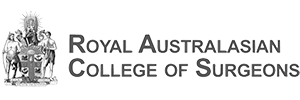Dermal Sarcoma
What Is a Pleomorphic Dermal Sarcoma?
Pleomorphic dermal sarcoma is an uncommon type of skin cancer. It is thought to be closely related to atypical fibroxanthoma, sharing similar clinical and histopathological features.
Who Does Pleomorphic Dermal Sarcoma’s Affect?
Pleomorphic dermal sarcoma are more common in older, male patients and arise in sun-exposed areas like the scalp, head and neck region.
What Causes Pleomorphic Dermal Sarcoma?
The cause of pleomorphic dermal sarcoma is unknown.
Possible causes can include:
- Age
- Poor general health
- Sun Exposure
Symptoms of Pleomorphic Dermal Sarcoma
Pleomorphic dermal sarcomas typically present as an exophytic, nodular, or plaque-like growth on sun damaged skin. These lesions may have rapid growth, especially in elderly patients. They often have no associated symptoms.
Pleomorphic dermal sarcoma may spread to lymph nodes and / or other organs (metastasise). Symptoms vary depending on where they spread.
How is Pleomorphic Dermal Sarcoma Diagnosed?
Diagnosis is made by performing a biopsy of the suspicious skin lesion in question.
After the diagnosis of sarcoma is made, staging may be performed with a CT or PET scan to assess for spread of disease elsewhere in the body.
Treatment of Pleomorphic Dermal Sarcoma
The majority of patients with pleomorphic dermal sarcoma are treated with surgery alone. In select cases, radiotherapy may be used to treat the disease, either alone or in conjunction with surgery.
For patients with disease that has spread (metastasised) there are few treatment options, immunotherapy has been used however there is limited data to support this at present.
Surgical Treatment for Pleomorphic Dermal Sarcoma
The surgeon's goal is to eliminate the malignancy as well as a margin (at least 1 to 2 cm) of healthy tissue around the affected tissue with the least amount of unnecessary tissue damage as possible. This is designed to ensure that all sarcoma or cancer cells are removed.
Following surgery, the removed tissue is examined under a microscope, the doctor will check to see if cancer is growing at the edges (margins) of the specimen. If cancer cells are present at the edges, the tissue removed is said to have positive margins. This means that cancer cells may have been left behind. When cancer cells are left after surgery, the patient may need more treatment − such as radiation or another operation.
Most tumours can be resected with surrounding normal tissue and the wound closed together. For larger tumours, there can be a large defect, this can be covered with skin (skin graft) or from tissue elsewhere in the body (pedicled or free flap) which is done jointly with a Plastic Surgeon.
How long does it take to recover from surgery?
Recovery is variable, dependent on the site and size of the sarcoma, and the need for reconstruction of the defect. Early mobilisation and physiotherapy are essential for a good recovery.
What if Dermal Sarcoma Goes Untreated?
The cells of a sarcoma will continue to divide if it is not treated, and the sarcoma will grow in size.
The sarcoma's continued growth can result in a mass in the soft tissues. This puts pressure on any neighbouring body tissues or organs. Sarcoma cells may also spread from the original region (metastasise).



